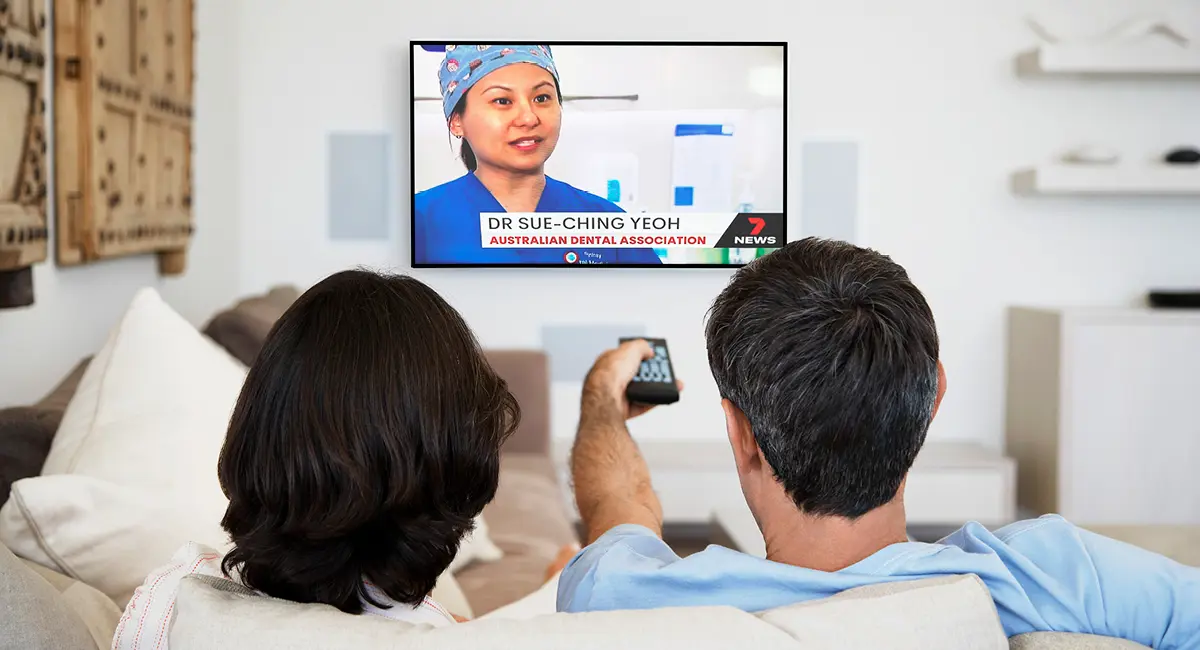ADA advocacy through media engagement
- In the media
- Advocacy
It has been another year of high-profile opportunities for the ADA to advocate for the profession with the ADA’s Federal Media Advisor Jenny Barlass presenting key highlights.

It has been another year of high-profile opportunities for the ADA to advocate for the profession with the ADA’s Federal Media Advisor Jenny Barlass presenting key highlights.
1. For Dental Health Week the public was reminded that ‘six minutes a day is all it takes’ is the difference between good oral health – and bad. Of course this may be a bit of simplification but it got the essential message out there – that as a nation of flossing avoiders, just six minutes at the basin is all that’s needed for good oral health.
2. The Federal Budget in May 2024 was a lost opportunity to provide financial support for the nation’s most vulnerable groups who spend years on public waiting lists in the hope of getting the dental treatment they badly need – and we put out a media release expressing frustration at the silence from Canberra. This policy position is a major spoke in the ADA’s advocacy wheel and one we will not let go of until the dental needs of all vulnerable groups are funded.
3. The ADA’s appearance at the Senate inquiry into the delivery of dental services Australia-wide attracted a raft of media interviews for our president and deputy CEO.
4. We constantly use and repurpose the ADA’s Consumer Survey to highlight the need to expand dental services, not least when it produces statistics such as that 74% of us rarely or never floss, and 17% of us brush only once a day, 61% only visit a dental practice when they have a problem and affordability accounted for the main reason for the delay.
5. The ADA joined forces with the AMA under the auspices of the Rethink Sugary Drink coalition to urge the Federal Government to introduce a sugar levy on sweetened drinks, at the start of the year in Canberra.
6. We carry on helping branches behind the scenes work with their state revenue offices to put forward a case for a ban on backdated payroll tax bills for members, as well as an equal playing field with GPs in deciding which healthcare providers are exempt. Several stories in the Australian Financial Review have been beneficial in exposing this issue.
7. Children hospitalised unnecessarily – almost 11 in every 1,000 kids aged 5-9 were admitted for preventable dental conditions in 2021-2022, and while one of the reasons for this is that plenty of people can’t afford to go to their family dentist to get oral issues fixed, the situation is made considerably worse with infants and children including those with special needs, prevented from having the dental operations due to a flawed funding model in the way hospitals allocate theatre space.
The ADA worked with paediatric dentists on this issue, which resulted in several stories in The Australian. We hope to make more headway, but it is a complex issue.
8. Ongoing media training of the Board and ADA members, key spokespeople and new officebearers such as Branch presidents in being relaxed, pumped with knowledge and proficient with media interviews.
A word about media releases
Federal ADA put out 20 releases on topics ranging from sugar tax to payroll tax, unnecessary paediatric hospitalisations, our Senate submission into dental access, the Government’s failure to fund dental for vulnerable populations, the perio-diabetes link and many more.

Advertising equivalent
$28.6 million (compared to $5,496,819 in 2022-23)
AVE calculations are based on the fact that a 30-second ad on 2GB costs $1,000 a minute. Given the average radio interview
lasts (or is a minimum of) five minutes, this equates to $5,000 for a five-minute chat.





Social Sharing
Share this via
Or copy link